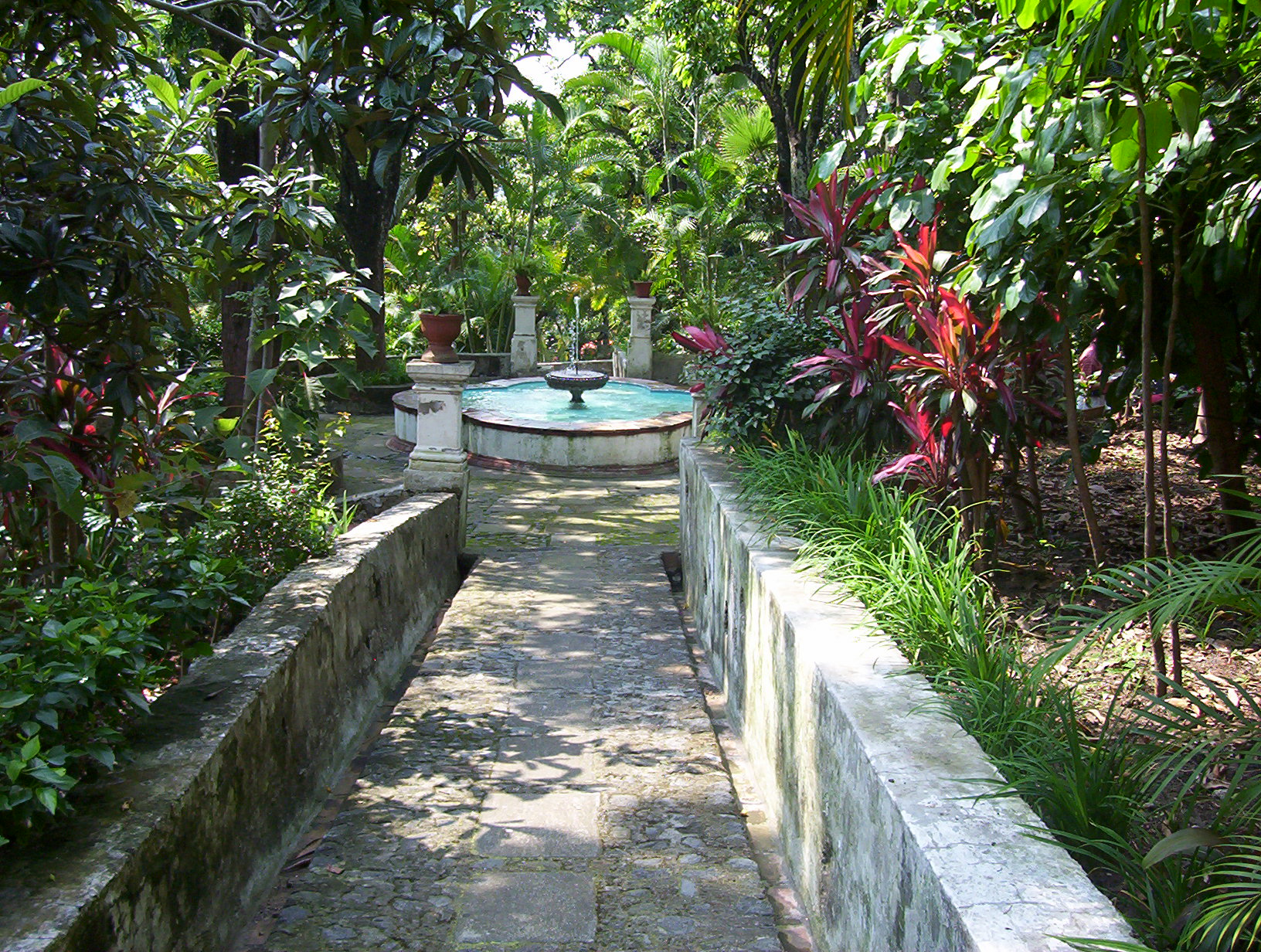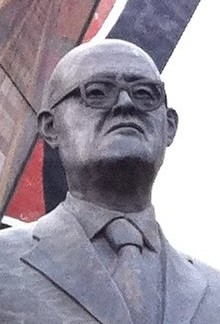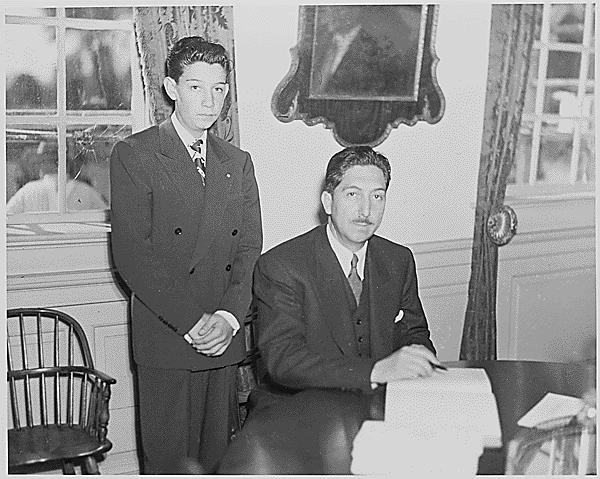|
Hotel De México
The Hotel de México was to have been the largest hotel in the Americas, a huge project started by the entrepreneur Manuel Suárez y Suárez in 1966 in Mexico City, Mexico. The project ran out of control and was never completed. After Suárez died in 1987 it stood unfinished for several years before being converted into an office building named the World Trade Center Mexico City, World Trade Center. Concept In 1966 the entrepreneur Manuel Suárez y Suárez embarked on building the Gran Hotel de México. Suárez had made his fortune in various infrastructure projects including water supply systems, canals and railways, and in sugar mills that were later nationalized. He conceived the idea of building a major business and tourist complex named Mexico 2000, centered around the huge Hotel de México. The architect was Guillermo Rossell de la Lama. The hotel was to be open in time to receive visitors to the 1968 Summer Olympics in Mexico City. It would be the tallest, largest and most ... [...More Info...] [...Related Items...] OR: [Wikipedia] [Google] [Baidu] |
Mexico City
Mexico City ( es, link=no, Ciudad de México, ; abbr.: CDMX; Nahuatl: ''Altepetl Mexico'') is the capital and largest city of Mexico, and the most populous city in North America. One of the world's alpha cities, it is located in the Valley of Mexico within the high Mexican central plateau, at an altitude of . The city has 16 boroughs or ''demarcaciones territoriales'', which are in turn divided into neighborhoods or ''colonias''. The 2020 population for the city proper was 9,209,944, with a land area of . According to the most recent definition agreed upon by the federal and state governments, the population of Greater Mexico City is 21,804,515, which makes it the sixth-largest metropolitan area in the world, the second-largest urban agglomeration in the Western Hemisphere (behind São Paulo, Brazil), and the largest Spanish language, Spanish-speaking city (city proper) in the world. Greater Mexico City has a gross domestic product, GDP of $411 billion in 2011, which makes ... [...More Info...] [...Related Items...] OR: [Wikipedia] [Google] [Baidu] |
Grand Palais
The Grand Palais des Champs-Élysées ( en, Great Palace of the Elysian Fields), commonly known as the Grand Palais (English: Great Palace), is a historic site, exhibition hall and museum complex located at the Champs-Élysées in the 8th arrondissement of Paris, France. Construction of the Grand Palais began in 1897 following the demolition of the Palais de l'Industrie (Palace of Industry) to prepare for the Universal Exposition of 1900. That exposition also produced the adjacent Petit Palais and Pont Alexandre III. The building was designed to be a large-scale venue for official artistic events. A pediment on the building refers to this function with an inscription that reads, "a monument dedicated by the Republic to the glory of French art." Designed according to Beaux-Arts tastes, the building features ornate stone facades, glass vaults and period innovations that included iron and light steel framing and reinforced concrete. It is listed as a historic monument (''monu ... [...More Info...] [...Related Items...] OR: [Wikipedia] [Google] [Baidu] |
Dodecahedron
In geometry, a dodecahedron (Greek , from ''dōdeka'' "twelve" + ''hédra'' "base", "seat" or "face") or duodecahedron is any polyhedron with twelve flat faces. The most familiar dodecahedron is the regular dodecahedron with regular pentagons as faces, which is a Platonic solid. There are also three regular star dodecahedra, which are constructed as stellations of the convex form. All of these have icosahedral symmetry, order 120. Some dodecahedra have the same combinatorial structure as the regular dodecahedron (in terms of the graph formed by its vertices and edges), but their pentagonal faces are not regular: The pyritohedron, a common crystal form in pyrite, has pyritohedral symmetry, while the tetartoid has tetrahedral symmetry. The rhombic dodecahedron can be seen as a limiting case of the pyritohedron, and it has octahedral symmetry. The elongated dodecahedron and trapezo-rhombic dodecahedron variations, along with the rhombic dodecahedra, are space-filling. There ... [...More Info...] [...Related Items...] OR: [Wikipedia] [Google] [Baidu] |
Gustavo Díaz Ordaz
Gustavo Díaz Ordaz Bolaños (; 12 March 1911 – 15 July 1979) was a Mexican politician and member of the Institutional Revolutionary Party (PRI). He served as the President of Mexico from 1964 to 1970. Díaz Ordaz was born in San Andrés Chalchicomula, and obtained a law degree from the University of Puebla in 1937 where he later became its vice-rector. He represented Puebla's 1st district in the Chamber of Deputies from 1943 to 1946. Subsequently he represented the same state in the Chamber of Senators from 1946 to 1952 becoming closely acquainted with then-senator Adolfo López Mateos. Díaz Ordaz joined the campaign of Adolfo Ruiz Cortines for the 1952 election and subsequently worked for the Secretariat of the Interior under Ángel Carvajal Bernal. He became the secretary following López Mateos' victory in the 1958 election, and exercised ''de facto'' executive power during the absences of the president, particularly during the Cuban Missile Crisis. In 1963, the ... [...More Info...] [...Related Items...] OR: [Wikipedia] [Google] [Baidu] |
Cuernavaca
Cuernavaca (; nci-IPA, Cuauhnāhuac, kʷawˈnaːwak "near the woods", ) is the capital and largest city of the state of Morelos in Mexico. The city is located around a 90-minute drive south of Mexico City using the Federal Highway 95D. The name ''Cuernavaca'' is a euphonism derived from the Nahuatl toponym and means 'surrounded by or close to trees'. The name was Hispanicized to ''Cuernavaca''; Hernán Cortés called it ''Coadnabaced'' in his letters to Charles V, Holy Roman Emperor, and Bernal Díaz del Castillo used the name ''Cuautlavaca'' in his chronicles. The coat-of-arms of the municipality is based on the pre-Columbian pictograph emblem of the city which depicts a tree trunk () with three branches, with foliage, and four roots colored red. There is a cut in the trunk in the form of a mouth, from which emerges a speech scroll, probably representing the language Nahuatl and by extension the locative suffix , meaning 'near'. Cuernavaca has long been a favorite escape fo ... [...More Info...] [...Related Items...] OR: [Wikipedia] [Google] [Baidu] |
Hotel De La Selva
The Hotel Casino de la Selva (Jungle Casino Hotel) was a hotel and casino located in the city of Cuernavaca, Mexico. The main building was opened in 1931 as a hotel and casino, but from 1934 it was used only as a hotel. Additions in the late 1950s included buildings designed by the architect Félix Candela that were roofed by reinforced concrete paraboloid shells. The interior was decorated with murals by well-known Mexican and Spanish artists. After the 1970s the hotel went into decline, and in 1994 was sold to a hotel chain that failed to pay taxes on the property. It was seized by the Mexican government and was auctioned off in 2001 as a site for construction of a discount store and a hypermarket. After demolition had begun there was a public outcry, and eventually some parts of the murals were preserved. History Initial construction (1931) Cuernavaca in the early 1930s held the homes of several former generals who later became presidents, Plutarco Elías Calles, Lázaro ... [...More Info...] [...Related Items...] OR: [Wikipedia] [Google] [Baidu] |
Fobaproa
Fobaproa (''Fondo Bancario de Protección al Ahorro''; "Savings Protection Banking Fund", in Spanish) was a contingencies fund created in 1990 by the Mexican government, led by then dominant Institutional Revolutionary Party (PRI) to attempt to resolve liquidity problems of the banking system. The contingencies fund was applied in 1995 during the Mexican peso crisis to protect Mexican banks. In 1998, it was replaced by Instituto para la Protección al Ahorro Bancario (Bank Savings Protection Institute), Mexico's current deposit insurance agency. In the years following the peso crisis, Fobaproa and its resulting debt has become a subject of controversy in Mexican politics. Beneficiaries of the fund were companies favored by the country's political leadership and were implicated in a number of corruption cases. The management of the Fobaproa funds drew significant criticism by Mexico's then two main opposition parties, the Party of the Democratic Revolution and the National Action ... [...More Info...] [...Related Items...] OR: [Wikipedia] [Google] [Baidu] |
Carlos Salinas
Carlos Salinas de Gortari CYC DMN (; born 3 April 1948) is a Mexican economist and politician who served as 60th president of Mexico from 1988 to 1994. Affiliated with the Institutional Revolutionary Party (PRI), earlier in his career he worked in the Secretariat of Programming and Budget, eventually becoming Secretary. He secured the party's nomination for the 1988 general election and was elected amid widespread accusations of electoral fraud. An economist, Salinas de Gortari was the first Mexican president since 1946 who was not a law graduate. His presidency was characterized by the entrenchment of the neoliberal, free trade economic policies initiated by his predecessor Miguel de la Madrid in observance of the Washington Consensus, mass privatizations of state-run companies, Mexico's entry into NAFTA, negotiations with the right-wing opposition party PAN to recognize their victories in state and local elections in exchange for supporting Salinas' policies, normaliz ... [...More Info...] [...Related Items...] OR: [Wikipedia] [Google] [Baidu] |
Vista Del World Trade Center Desde La Torre Latinoamericana De La Ciudad De México
Vista usually refers to a distant view. Vista may also refer to: Software * Windows Vista, the line of Microsoft Windows client operating systems released in 2006 and 2007 * VistA, (Veterans Health Information Systems and Technology Architecture) a medical records system of the United States Department of Veterans Affairs and others worldwide *VISTA (comparative genomics), software tools for genome analysis and genomic sequence comparisons *VistaPro, and Vista, 3D landscape generation software for the Amiga and PC * VIsualizing STructures And Sequences, bioinformatics software Organizations and institutions *Vista Entertainment Solutions, a New Zealand software company specializing in solutions for the cinema industry * AmeriCorps VISTA, a national service program to fight poverty through local government agencies and non-profit organizations *Ventura Intercity Service Transit Authority, a public transportation agency in Ventura County, California, US *Vista Community College, no ... [...More Info...] [...Related Items...] OR: [Wikipedia] [Google] [Baidu] |
Miguel Alemán Valdés
Miguel Alemán Valdés (; 29 September 1900 – 14 May 1983) was a Mexican politician who served a full term as the President of Mexico from 1946 to 1952, the first civilian president after a string of revolutionary generals. His administration was characterized by Mexico's rapid industrialization, often called the Mexican Miracle, but also for a high level of personal enrichment for himself and his associates. His presidency was the first of a new generation of Mexican leaders, who had not directly participated in the Mexican Revolution, and many in his cabinet were also young, university-educated civilians, close friends from his days at university. Early life and career Alemán was born in Sayula in the state of Veracruz,''Current Biography 1946 Yearbook'', p. 9. the son of revolutionary Gen. Miguel Alemán González and Tomasa Valdés Ledezma. Both had been married before, with Alemán González having a son by his first wife. They had two sons together, Carlos a ... [...More Info...] [...Related Items...] OR: [Wikipedia] [Google] [Baidu] |
David Alfaro Siqueiros
David Alfaro Siqueiros (born José de Jesús Alfaro Siqueiros; December 29, 1896 – January 6, 1974) was a Mexican social realist painter, best known for his large public murals using the latest in equipment, materials and technique. Along with Diego Rivera and José Clemente Orozco, he was one of the most famous of the " Mexican muralists". He was a member of the Mexican Communist Party, and a Stalinist and supporter of the Soviet Union who led an unsuccessful attempt to assassinate Leon Trotsky in May 1940. By accordance with Spanish naming customs, his surname would normally have been ''Alfaro''; however, like Picasso (Pablo Ruiz y Picasso) and Lorca (Federico García Lorca), Siqueiros used his mother's surname. It was long believed that he was born in Camargo in Chihuahua state, but in 2003 it was proven that he had actually been born in the city of Chihuahua, but grew up in Irapuato, Guanajuato, at least from the age of six. The discovery of his birth certificate in 2 ... [...More Info...] [...Related Items...] OR: [Wikipedia] [Google] [Baidu] |






